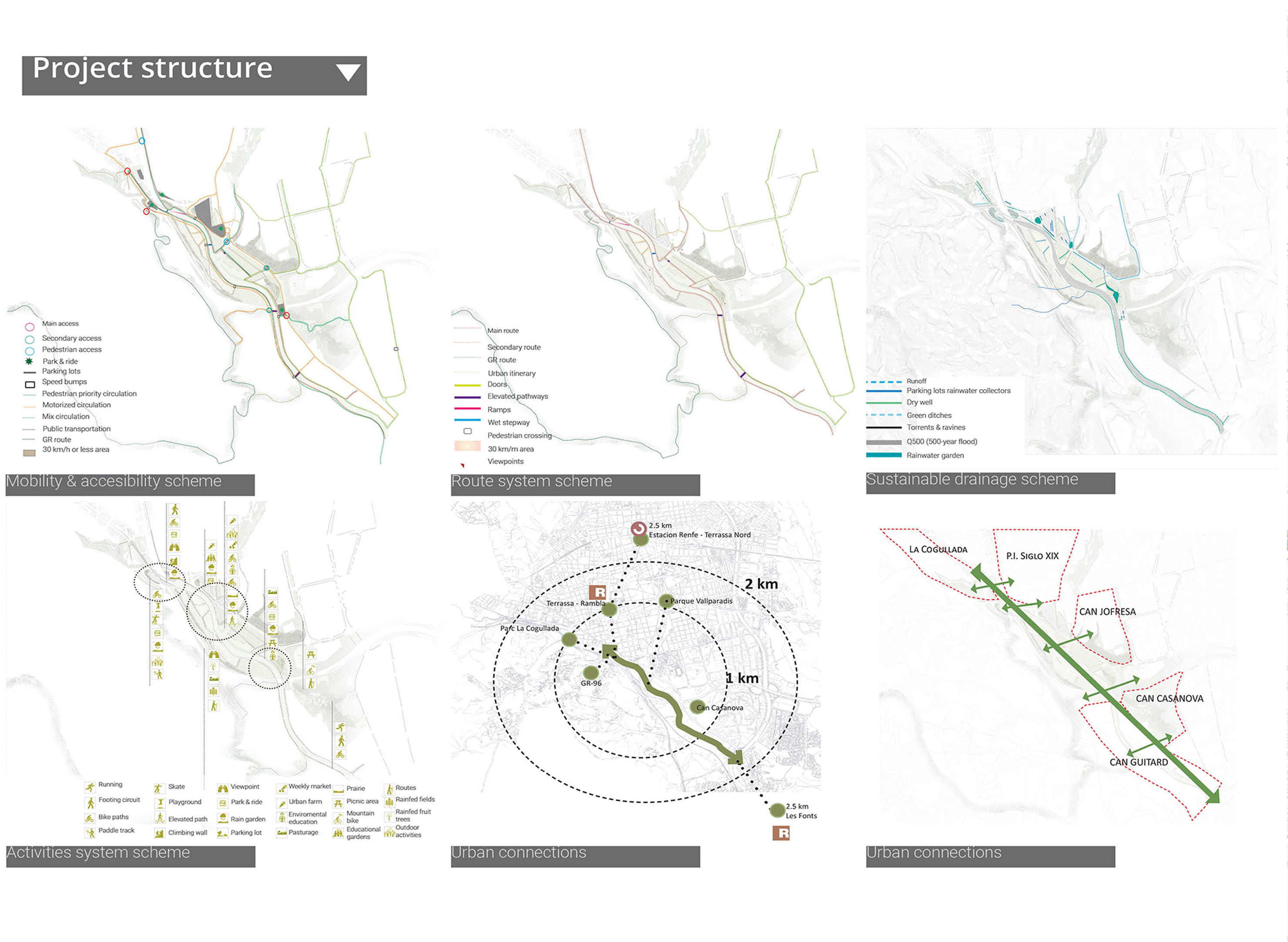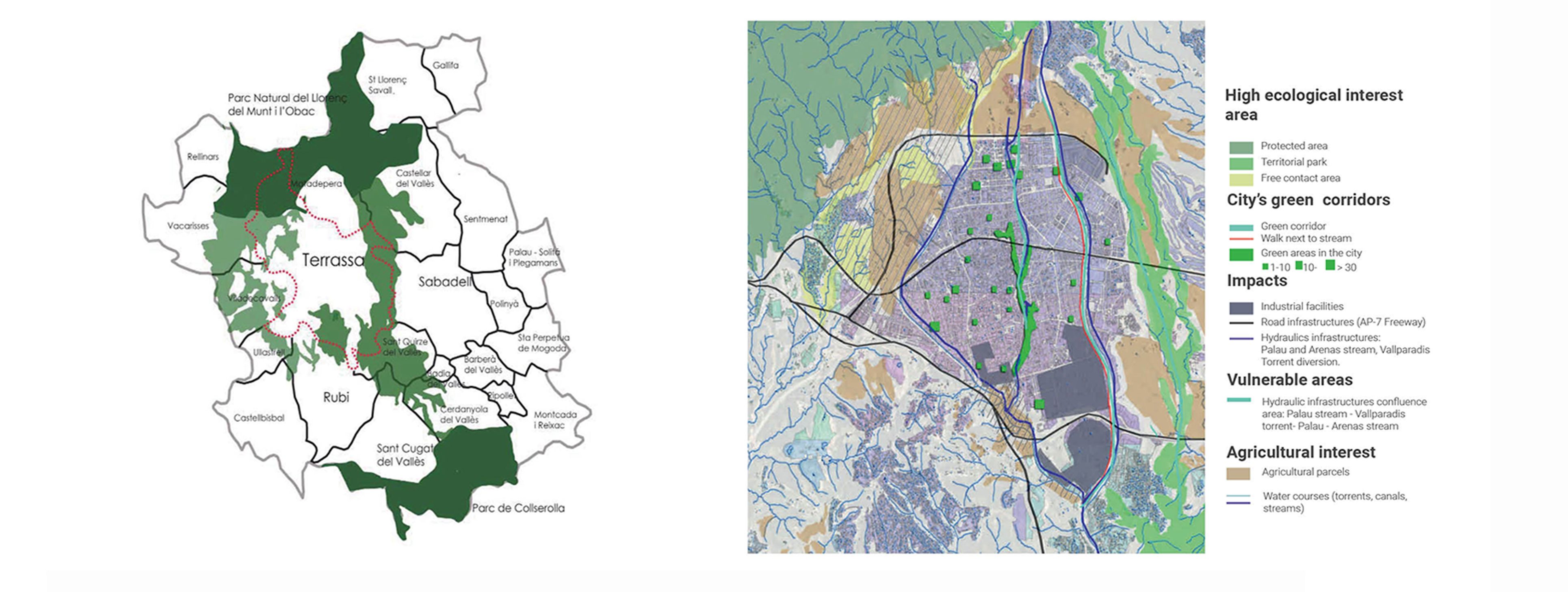The city of Terrassa, which as an industrial node in western Vallés, (County in Barcelona province) , has been able to recycle and renovate industrial fabrics in an exemplary manner, is currently in a common place in many medium-sized cities: to reflect on the relationship of the compact city with the landscape that surrounds it, to design more direct and attractive links, rethink the structure and character of its limits with this one and finally, identify and improve the different landscapes, guarantee their environmental and visual quality, intensify their structure, improve their ecological and connector effectiveness, correct the impacts they suffer and sustain them over the years.
Designer: Maidelin Martinez
Location: Terrassa, Barcelona
Status: Concept
The design pretends to address the relationship between the city’s green corridor and its vulnerable areas through a sustainable mobility axis whose confluence center converts into a central piece with a mixture of uses transforming into an enclave that generates multiple movements communicating the city and its different systems.
To establish intervention criteria and strategies natural and semi-natural elements are identified at the areas next to the urban scales, prioritizing the importance of green elements in peri-urban and urban areas such as:
Peri-urban parks, pathways and access roads, forests, hedges, prairies, agricultural area, torrents and streams
Parks and green areas
Urban trees
Green sports areas
Torrents
Urban farms
Promenades
Bike lanes
The majority of open spaces in the city are between 1-10 acres, with the exception of the Vallparadis park and Can Casanoves, which enhances the importance of the site area as a structuring centerpiece to the interconnection of all green areas in the North-South direction. As well as linking with other spaces in the east – west direction.
The municipality is framed in three main flows: Arenas stream, Palau stream and Vallparadis Torrent, which currently are engineering infrastructures as a flooding control system.
Despite lacking ecological and or landscape value, in some of its sections have the ability to contain even 500- year floods.
Taking into consideration these premises, the design aims to address the functionality as well as the aesthetic of its surroundings improving its quality and performance in accordance to the proposed landscape design.
Project Strategies
Promote physical activity through a cycle-pedestrian network connected to the urban mobility system with parking lots at the main access to the city to stimulate the sustainable displacement.
Gather the landscape in itself, improving the own identity of the anthropized environment on the stream edges using simple elements repeatedly and related in a sublime way with games of color, shapes, rhythms and metaphors.
Improve the stream conditions to favor the establishment of native flora and fauna (removing concrete walls, implementing bioengineering systems, erosion and water retention controls.
Use agriculture techniques such as using animals to maintain prairies and implementing a Runoff control systems to harvest rainwater and reuse for irrigation
Improve water quality and flow control before it reaches the torrents and stream, different runoff water collection points are proposed to harvest and repurpose to be used for cleaning in general.
These infiltration points are to be located in the city’s main entrances next to impermeable areas such as roads, parking lots, green ditches, etc. in rural and urban areas.

Maidelin Martinez
Maidelin Martinez received her Master’s degree in Landscape Architecture from the Polytechnic University of Catalonia in Barcelona in 2014. As a designer her main goal is to articulate the relationship between the built aesthetics and the natural environment reaching both full potential at its merge. Inspired by the beauty of the natural habitat, believes that plays a very important role in the cultural landscape and works in finding sustainable ways gathered in nature itself to enhance the urban environment. After graduating Martinez has worked freelance in several design projects from residential to hospitality.























